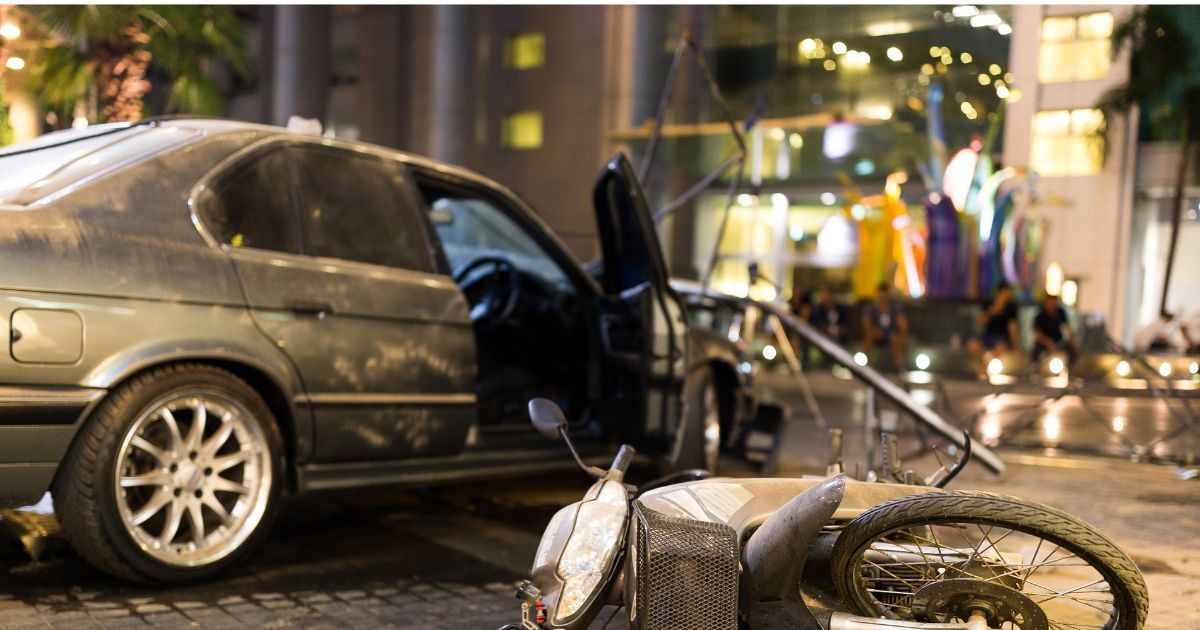What are Massachusetts Laws Relating to Motorcycle Use?
Recent Posts
Frequently Asked Questions (FAQ)
What’s the Most Common Cause of Motorcycle Accidents in Massachusetts?
Failure to yield by car drivers, especially during left-hand turns, tops the list, causing nearly 40–50% of multi-vehicle crashes. This aligns with the 1,800–2,000 annual incidents, particularly in busy Norfolk and Bristol counties.
Are Motorcycle Accidents More Deadly in Massachusetts Than Elsewhere?
Yes, somewhat—80% of crashes here result in serious injury or death, higher than the national average (around 60–70%), due to dense traffic and rural road risks. The 450 deaths over 10 years reflect this elevated severity.
How Does Weather Affect Motorcycle Crashes in Massachusetts?
Rain and snow significantly increase crash risk by reducing traction, contributing to the 66% of fatalities on rural roads like those in Plymouth County. Wet weather likely factored into dozens of the 160–180 county deaths since 2015.
Can I Sue If a Pothole Caused My Accident?
Yes, if poor road maintenance caused the crash, you might sue the responsible municipality (e.g., in Plymouth or Bristol counties). You’d need to prove negligence and file within three years, though such cases are tough to win.
Does Not Wearing a Helmet Make Accidents More Common?
No, it doesn’t cause crashes, but Massachusetts’ mandatory helmet law (90% compliance) reduces fatality severity. Non-compliance, rare here, might worsen outcomes, as seen in some of the 24 young rider deaths in 2018.
Why Are Intersections So Dangerous for Motorcyclists?
Intersections combine high traffic, turning vehicles, and visibility issues—41% of serious injuries occur there. In Brockton (Plymouth County) or Quincy (Norfolk County), these factors likely drove many of the decade’s 60–120 fatalities.
Massachusetts has a detailed set of laws governing motorcycle use, designed to ensure rider safety and public welfare on the road. From mandatory helmet requirements to specific insurance mandates and traffic rules, these regulations reflect the state's commitment to reducing the high risks associated with motorcycling. Below, we explore the key legal requirements for motorcyclists in Massachusetts, covering helmets, insurance, lane usage, and more.
Helmet Requirements
Helmets are a cornerstone of motorcycle safety in Massachusetts, with strict laws in place to protect riders and passengers. The state enforces a universal helmet mandate, emphasizing its proven effectiveness in reducing fatalities and severe injuries.
DOT-Approved Helmets
All motorcycle operators and passengers must wear helmets that meet or exceed U.S. Department of Transportation (DOT) standards. These helmets need to be securely fastened and worn at all times while riding. This requirement stems from evidence showing helmets reduce head injury risk by about 70%, saving numerous lives annually.
Speakers in Helmets
There’s no explicit ban on adding speakers to helmets in Massachusetts, provided the helmet retains its DOT compliance. However, riders should exercise caution—using speakers for music or other distractions could potentially violate general distracted driving laws, though communication or GPS use might be permissible if it doesn’t impair safety.
Insurance Requirements
Motorcyclists in Massachusetts must carry specific insurance coverage to operate legally, reflecting the state’s emphasis on financial responsibility. Unlike car drivers, motorcyclists face unique rules that exclude certain no-fault benefits.
Minimum Coverage Limits
Riders need liability insurance with at least $20,000 per person and $40,000 per accident for bodily injury to others, plus $5,000 for property damage. Uninsured/underinsured motorist coverage matching these bodily injury limits is also mandatory. Proof of this coverage is required for motorcycle registration.
No Personal Injury Protection (PIP)
Unlike car owners in Massachusetts’ no-fault system, motorcyclists are not required to carry Personal Injury Protection (PIP). This means riders don’t receive automatic medical payment coverage after an accident, relying instead on liability or optional insurance for personal injury costs.
Lane Splitting and Traffic Rules
Massachusetts imposes clear rules on how motorcyclists must navigate traffic, prioritizing safety and order. Lane splitting, a practice allowed in some states, is notably prohibited here.
Lane Splitting Prohibition
Lane splitting—riding between lanes of traffic moving in the same direction—is illegal under Massachusetts law. Riders must stay within a single lane and cannot pass other vehicles in the same lane, except another motorcycle in limited cases, as outlined in General Laws Chapter 89, Section 4A.
General Traffic Compliance
Motorcyclists must follow all standard traffic laws, including speed limits, yielding to pedestrians, and using turn signals. Operating under the influence or engaging in aggressive driving is strictly prohibited, ensuring riders contribute to road safety.
Additional Motorcycle Regulations
Beyond helmets, insurance, and lane rules, Massachusetts enforces several other requirements to keep motorcyclists and roads safe. These cover licensing, equipment, and vehicle upkeep.
Licensing Requirements
To ride legally, individuals need a Class M license, obtained through a knowledge test, a road test, or completion of the Massachusetts Rider Education Program. A learner’s permit is available at 16, with full licensure possible at 16.5, ensuring riders are trained and competent.
Eye Protection and Equipment
Riders must wear eye protection (glasses, goggles, or a face shield) unless their motorcycle has a windscreen. This rule enhances visibility and shields against debris, a critical safety measure on busy roads.
Registration and Inspections
Motorcycles must be registered and titled with the Massachusetts Registry of Motor Vehicles, with annual safety inspections required before June 1st at approved stations. This ensures bikes meet operational and safety standards, protecting all road users.
Safety Context and Considerations
Massachusetts’ motorcycle laws are shaped by the need to address the heightened risks riders face, with 59 fatalities in 2018 alone accounting for 16% of motor vehicle deaths. The universal helmet law, for instance, has kept unhelmeted fatalities low compared to national averages, while strict lane and insurance rules aim to minimize accidents and their financial fallout.
Riders modifying helmets with speakers should weigh safety over convenience, as distraction could undermine these protective measures. Together, these regulations create a framework that balances freedom with responsibility on the road.









